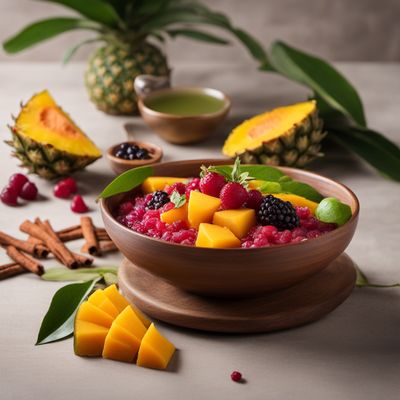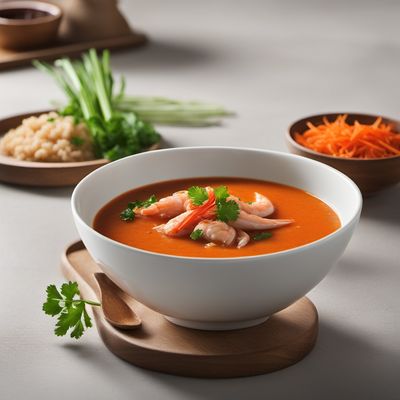
Ingredient
Star anise fruit
The Exotic Spice
Star anise fruit is a small, brown, star-shaped spice that is highly aromatic and possesses a strong licorice-like flavor. It has a woody texture and releases a warm, sweet aroma when crushed or ground.
Origins and history
Star anise fruit is native to China and has been used in traditional Chinese medicine and culinary practices for centuries. It is a key ingredient in Chinese five-spice powder and is also commonly used in Vietnamese, Indian, and Indonesian cuisines. The spice gained popularity in Europe during the Middle Ages and is now widely used worldwide.
Nutritional information
Star anise fruit is low in calories and a good source of antioxidants. It contains essential oils that have antimicrobial and anti-inflammatory properties. However, it should be consumed in moderation due to its high concentration of certain compounds.
Allergens
Star anise fruit may cause allergic reactions in individuals who are sensitive to spices or have a known allergy to aniseed or fennel.
How to select
When selecting star anise fruit, choose whole, intact stars that are plump and have a deep brown color. Avoid any signs of moisture, mold, or damage. Opt for organic star anise fruit to ensure it is free from pesticides or other chemical residues.
Storage recommendations
To preserve the freshness and flavor of star anise fruit, store it in an airtight container in a cool, dark place away from moisture and sunlight. Proper storage can extend its shelf life for up to a year.
How to produce
Star anise fruit is typically harvested from evergreen trees and requires a warm and humid climate to grow. It can be challenging to grow star anise fruit outside its native regions, but it is possible in tropical or subtropical areas with the right conditions.
Preparation tips
Star anise fruit is commonly used in Asian cuisines, particularly in savory dishes like soups, stews, and braised meats. It is a key ingredient in Chinese five-spice powder and is often used to flavor broths, sauces, and marinades. In sweet dishes, star anise fruit is used to infuse flavors into desserts, baked goods, and beverages like mulled wine or chai tea.
Culinary uses
Star anise fruit is commonly used in Chinese, Vietnamese, Indian, and Indonesian cuisines.
Availability
Star anise fruit is primarily cultivated in China, Vietnam, and other Asian countries. It is also available in specialty stores and online retailers worldwide.
More ingredients from this category
Recipes using Star anise fruit » Browse all

Coyol en Miel - Pembrokeshire Style
Pembrokeshire Honeyed Coyol Delight

Hủ tiếu Nam Vang with Shrimp and Pork
Savory Delights: Hủ tiếu Nam Vang - A Vietnamese Noodle Soup Infused with Shrimp and Pork

Taiwanese-style Laksa
Taiwanese Spicy Coconut Noodle Soup

Peranakan-style Fruit Compote
Nyonya Delight: Fragrant Peranakan Fruit Compote

Yunnan-style Chickpea Zimino
Spiced Chickpea Stew with Yunnan Flair

Pång’lao - A Flavorful Chinese Hot Pot Delight
Sizzling Sensation: Unleash the Aromas of Pång’lao Hot Pot

Khai Phalo - Thai-Style Braised Eggs in Spiced Coconut Sauce
Coconutty Delight: Thai-Style Braised Eggs in Fragrant Spiced Sauce

Chinese Aristocrat Mushroom Velouté
Silken Mushroom Elixir: A Chinese Aristocrat Delight

Liaoning-style Seafood Bisque
Savory Seafood Delight: Liaoning-style Bisque

Vietnamese Chicken Soup
Pho Ga - Vietnamese Chicken Soup with Rice Noodles

Manchu-style Egg Chips
Crispy Egg Chips with a Manchu Twist

Chao Hancai with Fragrant Spices
Savory Spice-infused Chao Hancai: A Chinese Delight